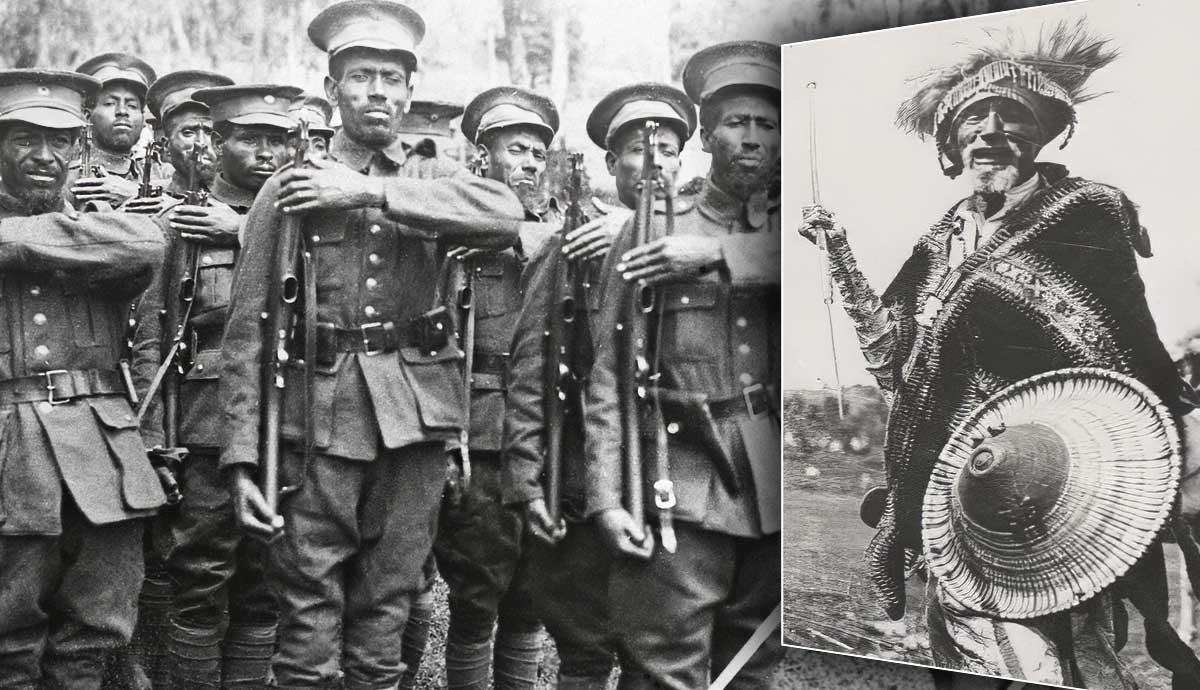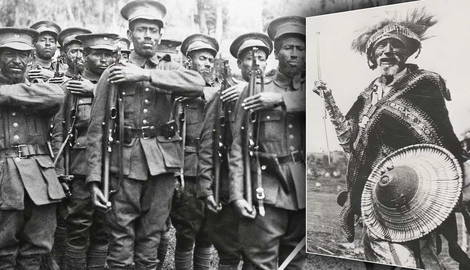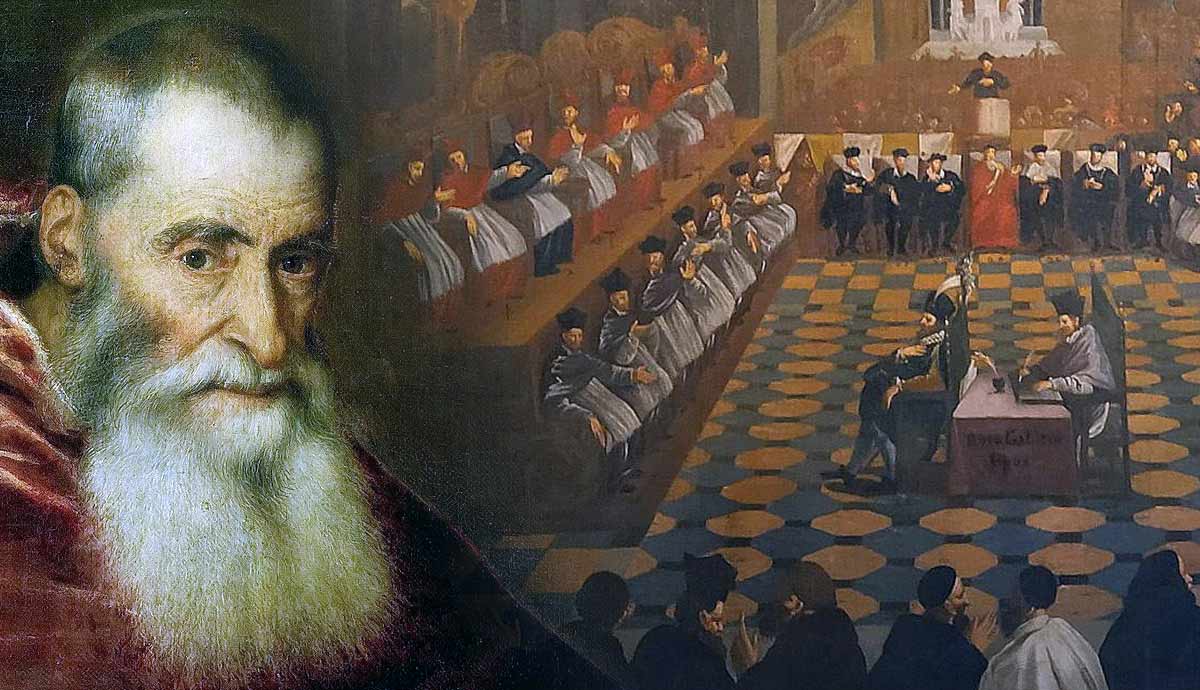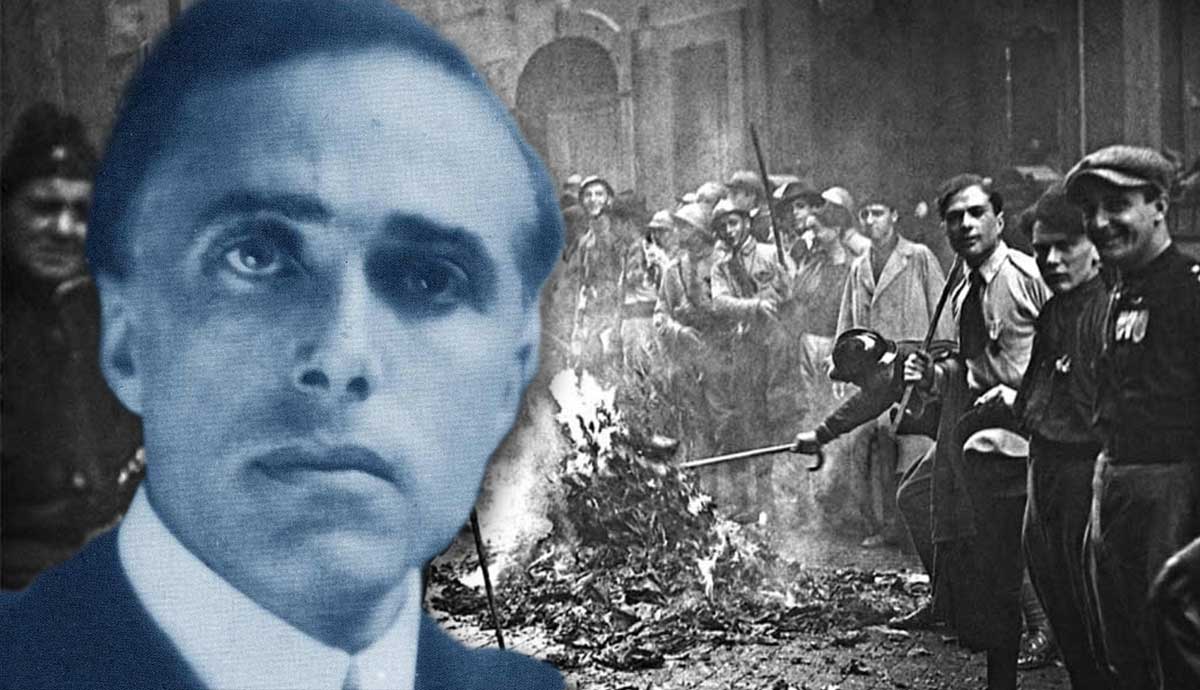
On May 9, 1936 (the fourteenth year of the fascist era), Benito Mussolini announced the foundation of the Italian colonial empire in Africa. A few days before his speech, the Italian army had entered Addis Ababa, the capital of Ethiopia. Forty years after the defeat of Adwa, during the First Italo-Ethiopian War, “Italy finally has its Empire,” declared Mussolini.
The Second Italo-Ethiopian War (1935-1936) played a crucial role in eroding the international order established by the Allies at Versailles. By demonstrating the inability of the League of Nations to prevent the outbreak of armed conflicts between its members, the Second Italo-Ethiopian War also paved the way for World War II.
Benito Mussolini & The Second Italo-Ethiopian War

On October 3, 1935, the Italian troops led by General Rodolfo Graziani and Pietro Badoglio invaded Ethiopia (then commonly known as Abyssinia), whose independence Italy had recognized with the 1896 Treaty of Addis Ababa. Fascist Italy had rejected all previous offers to solve the growing tensions. Benito Mussolini, the Duce of the fascist regime, presented the conflict as an opportunity to avenge the humiliating defeat of Adwa, where Emperor Menelik II put a definitive end to Italy’s colonial endeavor.
In 1935, however, Benito Mussolini was not only interested in restoring national pride. Above all, he believed that conquering Ethiopia would help him achieve a prominent position among the Western powers. In 1934, when the Duce began organizing the colonial exploit, his relationship with Adolf Hitler became strained, especially after the assassination of Engelbert Dollfuss, the Austrian Chancellor. As the threat of the Anschluss between Germany and Austria loomed closer, Mussolini, fearing the expansionist aims of the Third Reich, increased the Italian military presence in Alto Adige, the northern region of Italy that shared a border with Austria.
As the friction between Germany and Italy continued, Mussolini embarked on a new course in his foreign policy. While he shared Hitler’s disdain for the world order designed at Versailles, the Duce began to depict himself as a crucial ally to the Western powers in their efforts to prevent the Third Reich from breaking the terms of the Treaty of Versailles. Besides securing Italy’s place as a major player in international politics, Mussolini believed that his support of the European status quo would lead France and Great Britain to grant him a “free hand” in his colonialist war.
A Place in the Sun

On July 31, 1935, among mounting international opposition to the war of conquest against Ethiopia, Mussolini published in Il Popolo d’Italia an article titled “The Irrefutable Fact,” in which he listed the reasons behind the aggression. After dismissing the racial nature of the war, Mussolini declared that conflict was a means to meet the “vital needs” of the Italian people, remarking that the narrow Italian peninsula could not sustain the increasing demographic pressure. In the late 19th century, when Italy embarked on its first colonialist endeavor, the Liberal state had already argued that territorial expansion in Africa was the logical solution to Italy’s population problems.
The fascist regime had invested its propagandistic efforts in winning the support of the Italian communities abroad (especially in the United States), regarding them as crucial outposts of fascism. However, Mussolini was primarily interested in increasing the domestic birth rates. “The society of empty cots,” lamented the Duce, “does not build empires.” In this sense, the fascist dictator envisioned the creation of an Italian colonial empire as a crucial feature of his demographic policy.
Besides providing the Italian population with a “vital space,” Mussolini saw the military campaign against Ethiopia as a test run for the regime. In particular, the successful outcome of the conflict would emphasize the shortcomings of the liberal state, which had been unable to secure Italy its “place in the sun.” More importantly, conquering Ethiopia would prove that the regime was the rightful heir of the “glorious” Roman Empire and the “New Italian Man,” forged by war and the descendant of the Roman legionaries.

“The new Italian,” commented historian Angelo Del Boca, “[was] born on the African frontiers.” In 1925, the Fascist National Party (PNF) began to dismantle the liberal state. This radical transformation of Italian society would have to be accompanied by a parallel creation of a “New Man” whose key features included physical strength, dynamism, courage, and virility.
The colonial myth played a crucial role in promoting the anthropological revolution envisioned by the PNF. In his May 1936 speech, Mussolini declared that the creation of an empire “is the goal towards which … the irrepressible and disciplined energies of the young, vigorous Italian generations were re-enacted.”
Chemical Warfare in the Second Italo-Ethiopian War

Unlike the First Italo-Ethiopian War, when the Italian army faced the efficient troops of Menelik II in 1935, the Ethiopian forces could only rely upon outdated and traditional weaponry. Toward the end of 1935, during the so-called “Christmas offensive,” the fascist regime resorted to chemical warfare to expedite their advance. Ten years before, the Geneva Conventions had banned the use of asphyxiating gas during military conflicts. On April 3, 1938, Italy had officially ratified the protocol.
By the time the Italian army invaded Ethiopia, however, Italy had already stocked five hundred tons of yperite (also known as mustard gas), a corrosive and deadly poison. The production of asphyxiating weapons was supervised by the Office of Chemical Warfare of the Ministry of War. In total, the government had granted a budget of around one million lire for the manufacture of chemical weaponry. In the years before the outbreak of the war, Italy shipped a large part of its poisonous arsenal to the Italian-controlled territories in East Africa.
In January 1936, Marshal Pietro Badoglio commented on the usefulness of asphyxiating gas in breaking the Ethiopian resistance to the invasion. In particular, Badoglio reported that the use of chemical weapons was the best means to crush the enemy morale. Thus, he advised against stopping this kind of warfare.
General Rodolfo Graziani also remarked that the yperite bombs employed in the December offensive had proven to be particularly effective. Indeed, as the Ethiopians largely relied on animals for communications and transport, the asphyxiating gas paralyzed their communication routes. The Italians also bombed Red Cross hospitals and ambulances, sometimes by mistake but also as retaliation for the capture of Italian soldiers.

At the beginning of 1936, the Italian Air Force regularly sprayed Ethiopian soldiers, civilians, and cattle with poisonous gas. Besides the C 500-T yperite-loaded bombs, the Italians dropped C 100-P explosives, filled with arsine, a less deadly chemical, whose vapors impaired the respiratory tract, often leading the victims to die of suffocation. Ras Imru, an Ethiopian general, later recalled the disastrous effects these kinds of bombs had on his soldiers: “A few hundred of my men were hit by the mysterious liquid … their feet, their hands, their faces were covered with blisters … I did not know how to fight this rain that burned and killed!”
According to Angelo Del Boca, during the Second Italo-Ethiopian War, Italy used about 350 tons of poisonous weapons. After the end of World War II, many of the Italian high-ranking officers and government officials denied their involvement in the deadly chemical warfare, claiming that they had never been fully informed about the use of asphyxiating bombs and artillery. For example, Alessandro Lessona, the former Minister of Colonies, even claimed to have advised Mussolini against it. Indro Montanelli, a prominent Italian journalist who enrolled as a volunteer during the Second Italo-Ethiopian War, later dismissively described the conflict as “a lovely and long holiday given to us by our great Daddy.”
The League of Nations vs. The Fascist Regime

By invading Ethiopia, a fellow member of the League of Nations, Italy violated the League’s Covenant, binding its members not to resort to war to resolve their dispute. Thus, in 1935, Ethiopia appealed to the organization, urging the council to condemn and put an end to the aggression. The League of Nations, however, which had already failed to prevent Japan’s invasion of Manchuria, hesitated in imposing effective economic sanctions against Mussolini’s regime. Introduced to isolate and pressure Italy to agree to negotiations with Ethiopia, the measures were largely ineffective as France and Great Britain were reluctant to enforce sanctions against their ally in restraining the Third Reich.
The fascist regime responded to the League’s punitive measures by calling for autarky, or economic self-reliance. At the same time, Mussolini orchestrated a propaganda campaign against the “iniquitous sanctions,” depicting Italy as a vibrant and youthful newcomer punished by the Western powers simply for asserting the right to satisfy its “vital needs.” Then, in 1937, Italy left the League.

The mobilization of the Italian population in support of the war effort resulted in a widespread consensus for the fascist regime, with the patriotic initiative Oro alla Patria (Gold for the Fatherland) inducing many Italians to donate their wedding rings, pans, and metal bed frames to sustain the financial cost of the conflict. Even Queen Elena of Savoy joined the Giornata della Fede (Day of the Faith) on December 18, 1935. Among those who donated their precious possessions on that day were Sicilian playwright Luigi Pirandello (who gave his Nobel Prize medal), Guglielmo Marconi, and Benedetto Croce, a prominent opponent of the regime.
In the end, instead of willing Italy to end the conflict, the sanctions imposed by the League of Nations strengthened the fascist regime, which enjoyed a period of vast popular support. The Italians scattered across the globe also adhered to the patriotic campaign launched by the madrepatria, with many raising funds for their country of origin.
The Aftermath of the Second Italo-Ethiopian War

On May 9, 1936, from the balcony of Palazzo Venezia in Rome, Benito Mussolini solemnly announced that “the Italian people have created with their blood the Empire, fertilized it with their work, and defended it against anyone with their weapons.” He described it as a fascist empire, an “empire of peace,” and an empire of “civilization and humanity.”
While the Italian forces had managed to conquer Addis Ababa, large areas of Ethiopia refused to submit to the new fascist rule. As a result, the regime launched a vast campaign of repression against the Ethiopian resistance leaders. The reign of terror increased after the assassination attempt of Rodolfo Graziani (the Viceroy of the new colony), after which countless civilians were rounded up and summarily executed by the occupation forces in an event known as “the Massacre of Addis Ababa.”

In June 1936, Emperor Haile Selassie, who went into exile after the defeat, held a speech at the headquarters of the League of Nations, denouncing the atrocities committed by the Italians, including the use of chemical warfare. Haile Selassie’s words resonated among the Black diaspora, whose members had already loudly protested the Second Italo-Ethiopian War, especially in the United States, where on August 3, 1935, thousand African-American and white anti-fascists had marched down Lenox Avenue in Harlem to demonstrate against Italy’s expansionist claims in Africa. On the same Harlem street, after Italy’s victory, a crowd of African-Americans smashed the windows of Italian-owned shops and businesses.

Though the international community denounced the Second Italo-Ethiopian War, the conflict ultimately proved the League of Nations’ inability to safeguard its members’ independence and preserve the order established at Versailles. Most importantly, the fascist conquest of Ethiopia also exposed the Western powers’ weakness in containing the threat of Fascism in Europe. On the other hand, the Second Italo-Ethiopian War strengthened Benito Mussolini, who continued his foreign policy with Italy’s involvement in the Spanish Civil War (1936-1939).










